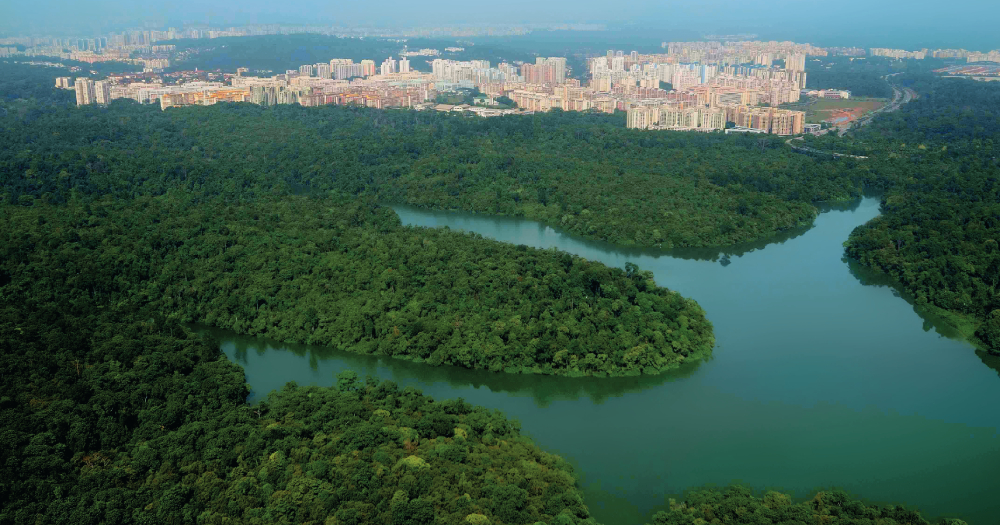On Wednesday (Dec. 4), the Ministry of Transport announced that it would be going ahead with plans to build the Cross Island Line (CRL) directly underneath the Central Catchment Nature Reserve (CCNR).
The controversial decision has been years in the making, with the CRL originally announced in January 2013.
It is part of the government’s rail infrastructure expansion plan to double the length of the rail network in Singapore by 2030.
At the time, the proposed alignment of the CRL, which goes on for approximately 50km, appeared to cut through a portion of the CCNR.
This caused concern among environmental groups in Singapore, who were worried that the construction of the CRL would be harmful to the CCNR.
One group, Nature Society (Singapore) published a paper in July 2013, outlining their position.
So what exactly are the environmental issues at stake?
Protection and conservation
According to the Parks and Trees Act, one of the reasons nature reserves are set aside is for the "propagation, protection and conservation of the trees, plants, animals and other organisms of Singapore, whether indigenous or otherwise".
As its name suggests, the CCNR is one of the reserves protected under the act.
According to the NParks, the CCNR is home to a "magnificent diversity of plants" such as the Keruing and Meranti.
It also houses the Raffles Banded Langur and the Sunda Pangolin, both critically endangered animals.
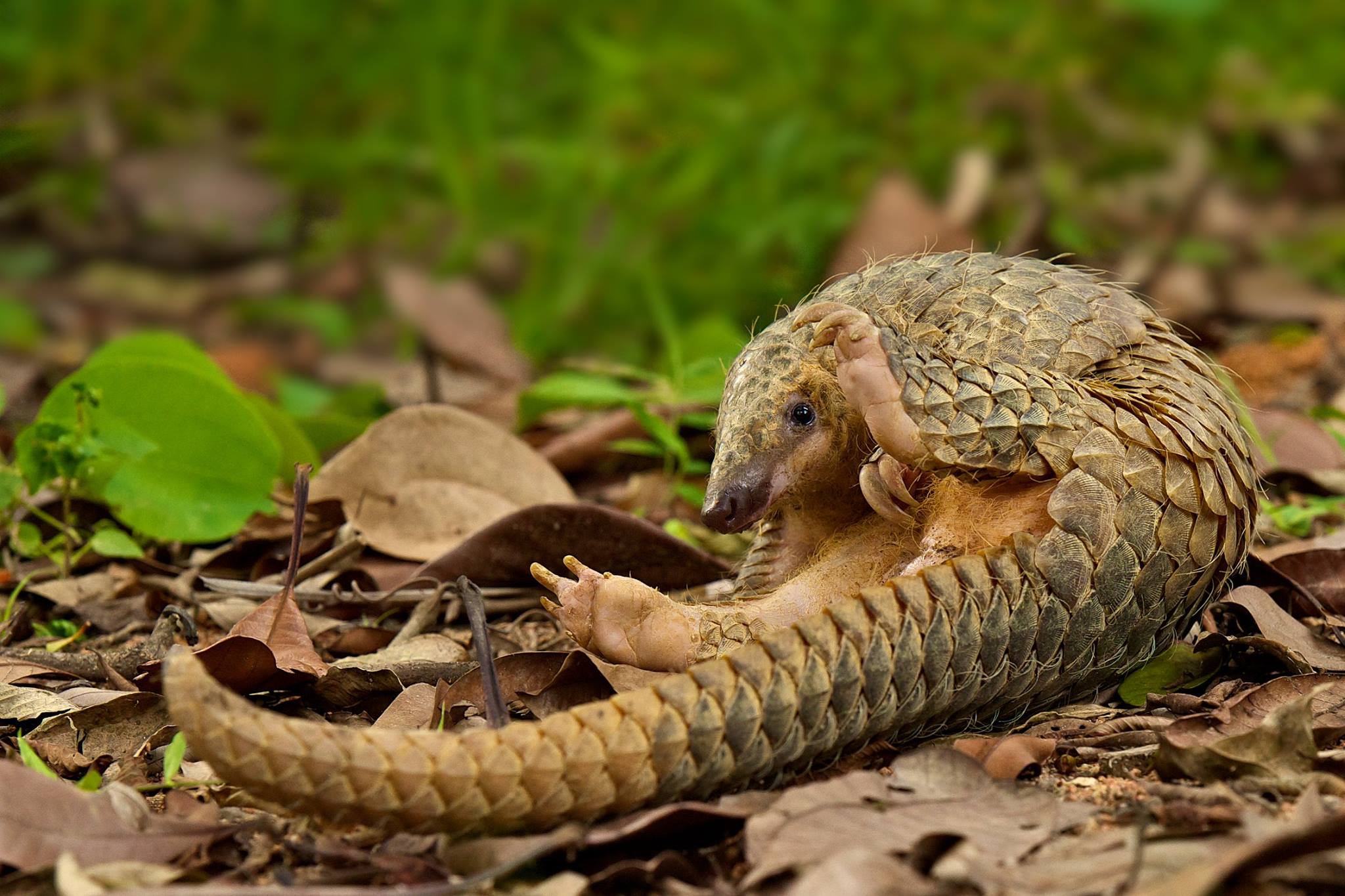 Photo from NParks/Facebook.
Photo from NParks/Facebook.
In their paper, Nature Society (Singapore) argued that the CRL should not run through the CCNR, as this had the potential to cause "damage to highly valued ecosystems".
"While the CRL is intended as an underground corridor our greatest concerns are related to degradation of the forest habitats due to soil investigation and other related engineering works that will be required on the surface."
While many might think that the nature reserve is just a large patch of forest, it in fact comprises at least six types of vegetation which include freshwater, wetland forest, and marshes as well as primary forest and regenerated ones.
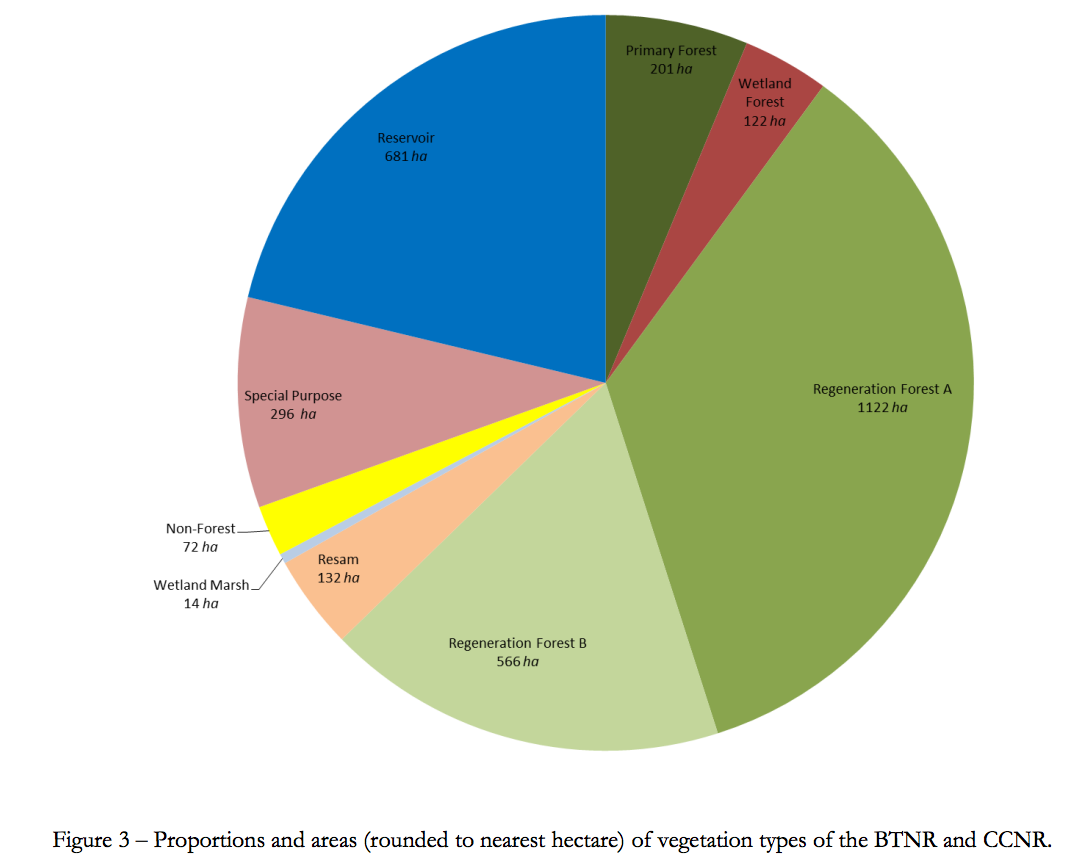 Image from Nature Society Singapore's CRL position paper.
Image from Nature Society Singapore's CRL position paper.
In general, primary forests have diminished drastically over the past 200 years due to rapid urbanisation.
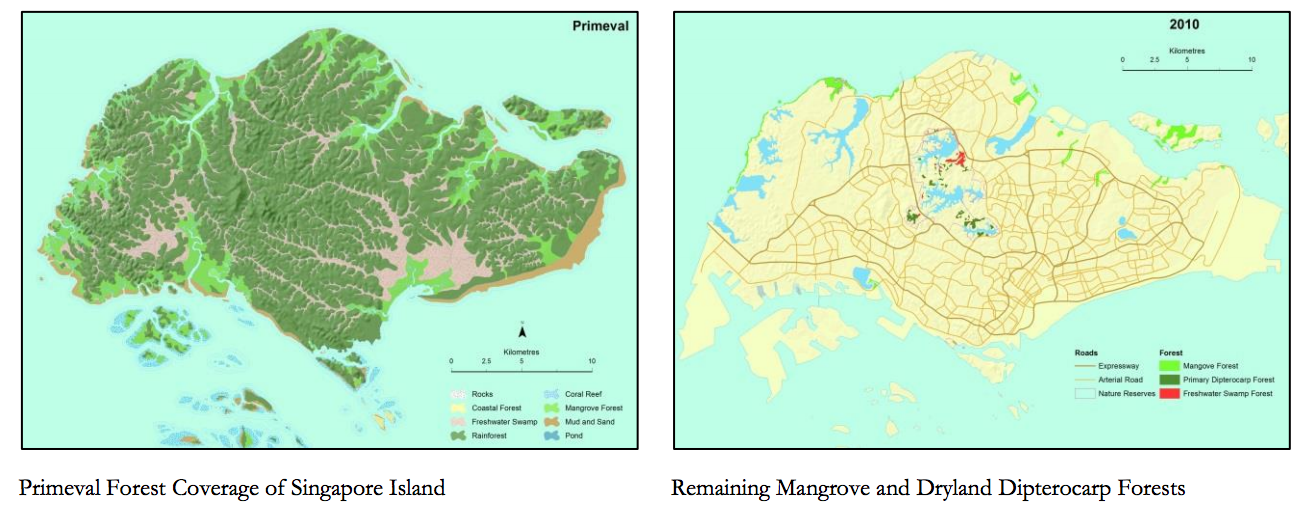 Images from Nature Society Singapore's CRL position paper.
Images from Nature Society Singapore's CRL position paper.
Highly undisturbed forests like CCNR are rare to come by in Singapore, and they are important for the maintenance of the hydrological cycle.
In light of climate change, primary forests are also key carbon sequestrators that absorb carbon dioxide from the atmosphere.
Concerns on degradation of forest habitats
More specifically, the nature community is concerned about how the construction work will damage the fragile ecosystem and the pristine environment.
Soil investigation and other related engineering works on the surface are of their greatest concern.
Soil Investigations
Part of the soil investigations would require boring works to be conducted. This is where holes are drilled into the ground using machinery.
The Nature Society (Singapore) wrote that such work would be "highly destructive".
This is because borehole sites require a clear working platform of approximately 20 square meters to accommodate the boring machine and its related operations.
To facilitate this, land may need to be cleared and levelled.
Furthermore, there is a need for vehicular access to each site -- in order to supply fresh water and remove grinding sludge -- which means that roads may have to be built into the drilling locations.
There is also the risk of highly toxic materials that are used by the drilling machinery leaking into the surrounding environment.
Siltation
Siltation is a process by which water is polluted because of fine mineral particles.
The Nature Society (Singapore) wrote that in the process of drilling and constructing roads, it would be guaranteed that soil would be washed into the stream systems surrounding drill sites, "no matter what mitigation works are installed".
"It has been found that fine sediment pollution from road construction can immediately alter macroinvertebrate and fish communities reducing the overall abundance of stream fishes by over 50%."
Some consequences of the sediment polluting water include:
- Clogging the gills of fishes.
- Reducing the quality of their habitats for feeding by impairing visibility and reducing prey abundance.
- The recovery of endangered species to recover from the pollution cannot be guaranteed.
Studies have shown that while the fish and invertebrate communities may start recovering once the pollution washes downstream, full recovery may require years.
Lornie Road alternative
Due to the above reasons, and others spelt out in the Nature Society (Singapore)'s paper, an alternative alignment was suggested.
This route would see the CRL follow Lornie Road — just south of the CCNR and skirting around the reserve instead of going directly underneath it.
At the time the Nature Society (Singapore) estimated that it would increase the distance by an extra 1.7-2km.
But Land Transport Authority (LTA) pointed out this would translate to additional costs and travelling time, and took this into consideration as they weighed their options.
LTA studies the impact
Over the next few years, LTA conducted an environmental impact assessment (EIA) of the CRL.
This was done in two phases with the first phase being completed in Feb. 2016.
A subsequent report concluded that:
"Proposed site investigation works, with the implementation of mitigating measures and controlled access, could be carried out with moderate impact on the few parts of the nature reserve where these works are to take place."
A report for the second phase of the EIA was released in Sep. 2019 and made recommendations on what mitigation measures and environmental management and monitoring plans should be put in place for two possible underground alignment options.
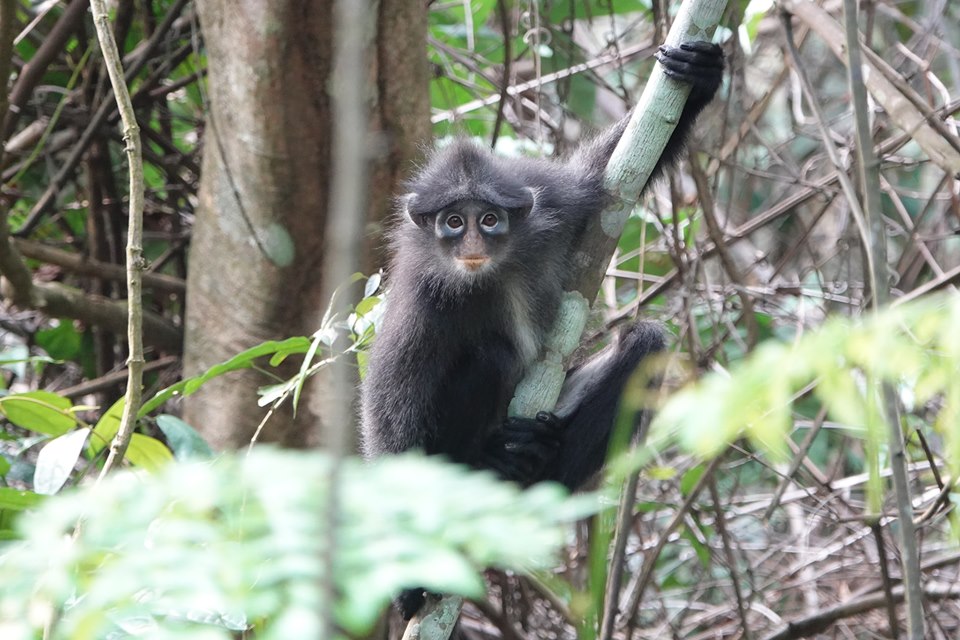 The Raffles Banded Langur. Photo from Jia Wei Woo / FB
The Raffles Banded Langur. Photo from Jia Wei Woo / FB
Two options
The first option was the direction alignment option, running 70m underneath the CCNR, or about the height of a 25-storey HDB block.
The second was an alignment that skirted around the CCNR, running 25m-30m beneath.
The EIA found that environmental impact could be managed by locating the worksites as far as possible from the CCNR, and implementing a comprehensive Environmental Monitoring and Management Plan to protect flora and fauna.
During the past six years, LTA also engaged various stakeholders which include the nature groups, heritage groups, residents and grassroots leaders in the area.
The decision and nature group's response
The government eventually decided on the direct alignment, which was announced on Dec. 4, 2019.
The nature group then published a collective response, summarising their engagement with the LTA, as well as general views from seven members from the nature scene, which include researchers and educators.
Specific concerns on tunnelling work well-addressed
The nature group's specific concerns about running the tunnel directly underneath the reserve include how tunnelling work will affect soil stability, survivability of animals in the presence of vibration, hydrology and slope stability, as well as the locations of the work sites.
LTA was described to have been active in addressing the above-mentioned concerns.
They formed an independent panel of advisors, comprising local and foreign engineering experts, to look into engineering issues after the nature group pressed them for one.
Extra studies were taken to ascertain that vibration from the tunnelling work is localised and transient in nature, even though "it remains critical to be vigilant and monitor vibration closely and constantly".
A member of the nature group, Norman Lim T-Lon, highlighted that the authorities should take a more conservative view on how wildlife will eventually respond to the noise and vibrations.
This is particularly important as the current monitoring method might not be the most "biologically appropriate" measurement.
Possible spillover effect acknowledged
In addition to that, LTA also acknowledged and registered the nature group's concerns about the habitat losses and possibly spillover effect on the nature areas from the worksite.
They were convinced to minimise the working area at one of the work sites (A1-W1) and agreed, in principle, to relocate non-site-dependent equipment and facilities to less sensitive areas away from A1-W1.
A1-W1 is known to have sighted animals of conservation significance, and connects the southern and northern parts of CCNR.
 Image via LTA EIA Phase 2 report.
Image via LTA EIA Phase 2 report.
The nature group also recommended relocating A1-W1 worksite partially or fully to SICC Island Golf Course.
LTA has also engaged primatologist Andie Ang to conduct an extra study on the movement of the Raffles Banded Langur, and to recommend measures to maintain connectivity of habitat for them.
Broader concerns
While the nature group is appreciative that LTA has consulted them "in good faith", there remain some concerns and learning points from the engagement.
The nature group highlighted that there needs to be a higher level regulation on the methodology used in assessing the environmental impact in Singapore for development projects.
There should be a "coherent, consistent and rigorous" standards for all EIA done in Singapore as well as "active and honest consultation" with the nature community to reduce any subjectivity or inherent blind spots that would downplay impact magnitudes and significance.
While the EIA has identified seven scenarios for the authorities to make plans to reduce risks and to respond, there remain three critical uncertainties, the nature group cautioned:
- The rigour and vigilance of monitoring of all early warning indicators.
- The timeliness of remedial responses, along with the availability of necessary resources and familiarity of the response teams of the procedures to cope with any contingency.
- The “unknown unknowns” or any unanticipated impacts that one is caught off guard, such as the unexpectedly high faunal mortality rate as roadkill during construction along Mandai Lake Road for the Mandai Rainforest Park project.
Moving forward
On the CRL project, the nature community hopes the government can continue to engage them in the Advanced Engineering Phase.
The nature community will be of tremendous use in this latter stage.
For example, they can come up with solutions to retain larger trees, as well as helping to audit the worksites to ensure the Environment Management & Monitoring Plan (EMMP) stated in the EIA is dutifully carried out.
The community also recommends the government to consider having compensatory works, such as forest enhancement and forest de-fragmentation projects.
This can be implemented not just for the CRL project, but also for future major infrastructure developments.
Lastly, the nature community hopes that the engagement with nature and wildlife experts can become a common practice in future development planning.
This can lead to innovative and biodiversity-friendly plans which will minimise the need to have mitigation and risk reduction, should there be any threats to the ecosystems as a holistic plan would have averted them.
Related stories:
Top image collage from NParks and Raffles Banded Langur/Facebook.
If you like what you read, follow us on Facebook, Instagram, Twitter and Telegram to get the latest updates.
